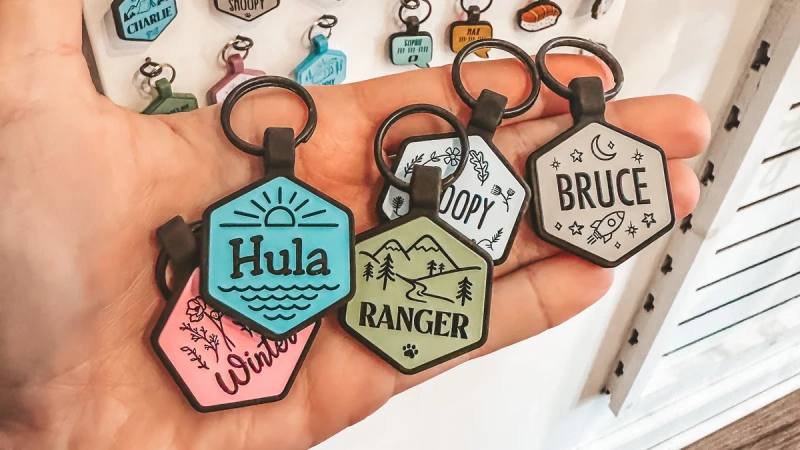Dog harnesses are essential pieces of pet equipment that require regular maintenance to ensure both safety and longevity. This comprehensive guide will help you understand the proper cleaning methods, maintenance schedules, and best practices for keeping dog harnesses in optimal condition.
Understanding the Importance of Clean Dog Harnesses
Regular cleaning of dog harnesses is crucial for several reasons:
- Hygiene Maintenance: Prevents bacterial growth and unpleasant odors.
- Extended Durability: Regular cleaning extends the product lifespan.
- Skin Protection: Clean harnesses reduce the risk of skin irritation.
- Performance: Well-maintained harnesses function better during use.
- Customer Satisfaction: Clean equipment leads to happier pets and owners.
Methods of Washing Dog Harnesses
Hand Washing Method (Recommended for Most Harnesses)
Essential Supplies:
- Mild liquid dish soap or pet-specific shampoo
- Warm water (not exceeding 30°C/86°F)
- Soft-bristled brush or sponge
- Clean bowl or sink
- Microfiber drying towel
- Baking soda (for odor removal)
Detailed Step-by-Step Process:
- Initial Preparation (10-15 minutes)
- Remove all detachable parts.
- Shake off loose dirt and debris.
- Brush away embedded pet hair.
- Inspect all buckles, straps, and stitching.
- Document any damage for future reference.
- Soaking Process (15-20 minutes)
- Fill sink with warm water.
- Add 1-2 teaspoons of mild soap.
- Submerge harness completely.
- Allow to soak for optimal dirt loosening.
- Gently agitate periodically.
- Detailed Cleaning (10-15 minutes)
- Use soft brush for thorough cleaning.
- Focus on high-friction areas:
- Chest piece
- Shoulder straps
- Belly area
- Buckle points
- Pay special attention to:
- Visible stains
- Sweat marks
- Mud accumulation
- Salt residue from winter use
Machine Washing Method (For Machine-Washable Harnesses)

Required Items:
- Mesh laundry bag
- Mild pet-safe detergent
- Washing machine
- Protective towels
Detailed Process:
- Pre-Wash Preparation
- Check manufacturer’s care label.
- Secure all buckles and straps.
- Place in mesh laundry bag.
- Add protective towels to wash load.
- Machine Settings
- Select gentle/delicate cycle.
- Use cold water setting.
- Set to low spin speed.
- Avoid fabric softeners.
- Skip bleach products.
Professional Drying Guidelines
Air Drying Process (4-8 hours)
- Gently squeeze out excess water.
- Never wring or twist the harness.
- Hang in well-ventilated area.
- Avoid direct sunlight exposure.
- Ensure complete drying before use.
Optimal Drying Conditions
- Room temperature: 20-22°C (68-72°F).
- Humidity level: 40-50%.
- Air circulation: Use fan if needed.
- Average drying time: 4-6 hours indoor.
Maintenance Schedule Recommendations
Regular Use Scenarios
- Weekly cleaning for active dogs.
- Bi-weekly for moderate use.
- Monthly for light use.
- Immediate cleaning after:
- Swimming
- Muddy walks
- Beach visits
- Rain exposure
Professional Inspection Points
- Check stitching integrity.
- Examine buckle functionality.
- Test strap adjusters.
- Inspect padding condition.
- Verify reflective material effectiveness.
Special Care Instructions
Material-Specific Guidelines
- Nylon: Machine washable, quick-drying.
- Leather: Hand clean only, use leather conditioner.
- Mesh: Gentle cycle acceptable, air dry only.
- Canvas: Hand wash preferred, reshape while drying.
Seasonal Considerations
- Summer: More frequent cleaning due to sweat.
- Winter: Salt removal important.
- Spring: Mud and pollen attention.
- Fall: Check for leaf stains and debris.
Storage Recommendations
Between Uses
- Store in dry location.
- Avoid direct sunlight.
- Keep away from heat sources.
- Use breathable storage bag.
- Maintain shape during storage.
Long-Term Storage
- Clean thoroughly before storing.
- Ensure complete drying.
- Apply protective treatments if needed.
- Check periodically for moisture.
Quality Assurance Measures
Post-Cleaning Inspection
- Check all stitching.
- Test buckle functionality.
- Verify strap adjustment.
- Examine padding integrity.
- Ensure proper shape maintained.
Safety Verification
- Test all connection points.
- Check for material weakness.
- Verify size adjustment function.
- Ensure proper fit after cleaning.
Frequently Asked Questions (FAQ)
How often should you wash your dog’s harness?
If it is covered in mud, you should wash your dog’s harness immediately to remove bacteria and avoid staining. In standard use, harnesses should be washed roughly every 1–2 weeks.
Can I machine wash my dog’s harness?
While some harnesses are machine washable, it’s generally safer to hand wash. If machine washing, use a gentle cycle and place the harness in a laundry bag for protection.
How do I remove stubborn stains or odors?
For tough stains, use a soft brush with soapy water. For odors, try a solution of hydrogen peroxide, baking soda, and dish soap as mentioned earlier.
Is it safe to dry my dog’s harness in the dryer?
No, always air dry your dog’s harness. High heat from dryers can damage the materials.
What if my dog has an allergic reaction to the harness?
If you notice any signs of irritation, discontinue use immediately and consult your veterinarian. Consider switching to a hypoallergenic material or a different design.
Conclusion
Maintaining a clean dog harness is essential not only for hygiene but also for the comfort and safety of your pet. By following the outlined washing methods and maintenance schedules, pet product businesses can ensure that their customers are well-informed about keeping their dog’s gear in optimal condition. Regular inspections and adherence to care instructions will prolong the life of harnesses while enhancing customer satisfaction. A clean harness leads to a happy pet and a happy owner!




